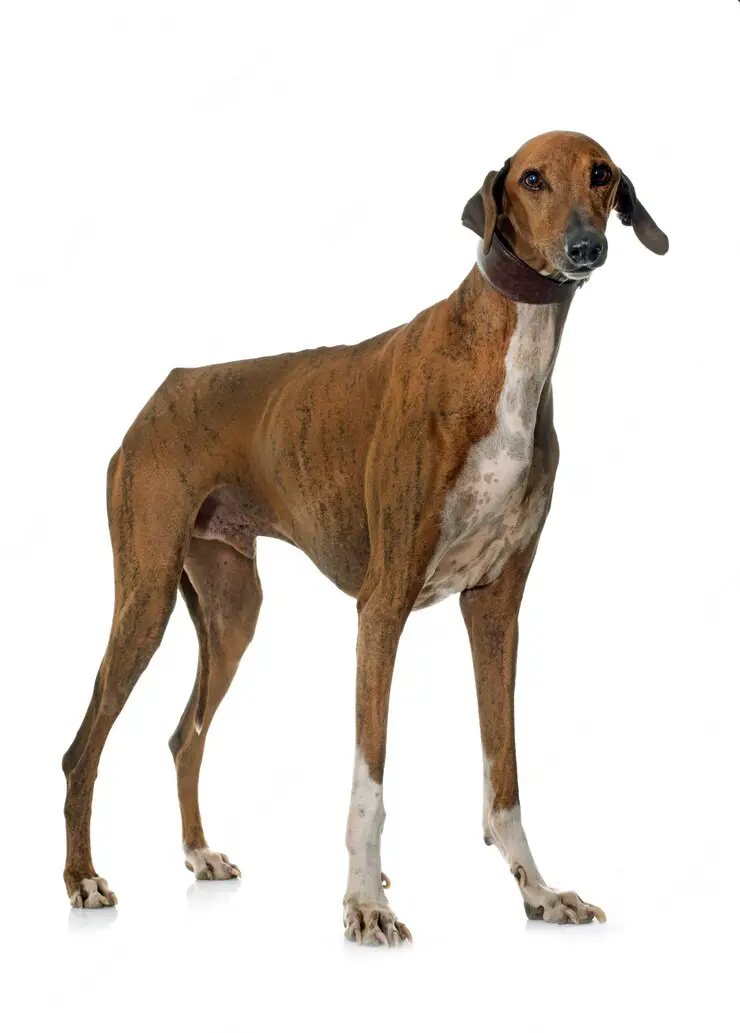The Azawakh is a tall and graceful West African sighthound that is native to Burkina Faso, Mali, and Niger. The short, fine coat of the Azawakh can be any hue or mix of colors, including red, clear sand to fawn, brindled, parti-color (which may be mostly white), blue, black, and brown. The legs, bib, and tail tip may be marked in white, while the head may have a black mask. The breed does not have any color or marking restrictions. As befits its heritage, the Azawakh succeeds in the United States as a friend, a protector, and a lure-courser.
This old hunting hound is so rangy and slim that his musculature and bone structure are clearly visible beneath his skin. The Azwakh is recognized as a member of the sighthound family by its smooth S-shaped features, deep chest, and aerodynamic head. Sighthounds are canine sprinters who depend on sharp vision and lightning speed to fix and course their prey. The ultrafine coat is available in a variety of hues and designs. Beware: Despite the leggy hound’s overall appearance of elegance and refinement, it is a hardy hunter who has been pursuing gazelle through the searing sands of the Sahara for more than a thousand years.




 Health
Health Grooming
Grooming Exercise
Exercise Training
Training Nutrition
Nutrition